#Light Vehicle Mechanical Technology
Text
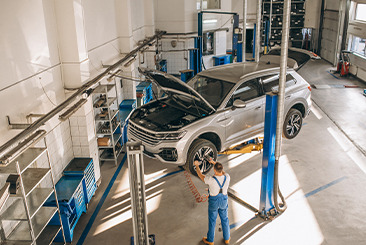
Certificate III in Light Vehicle Mechanical Technology | Apeiro Institute
Certificate III in Light Vehicle Mechanical Technology a broad range of tasks on a variety of light vehicles in the automotive retail, service and repair industry.
Continue reading - https://www.apeiro.edu.au/courses/automotive-courses/aur30620-certificate-iii-in-light-vehicle-mechanical-technology/
0 notes
Text
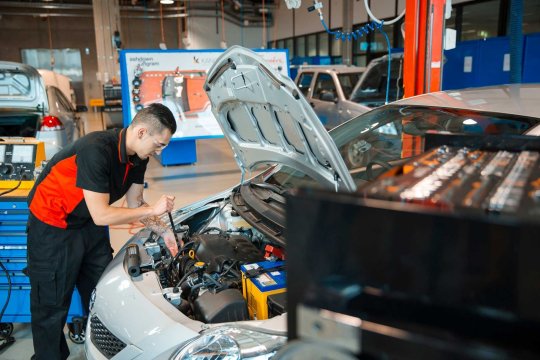
Get started on your path to success with one of the Mars Institute’s TAFE courses. Get skilled at your local Melbourne TAFE.
#TAFE courses#TAFE#Mars Institute#education#technical skills#automotive technology#certificate course#Certificate III in Light Vehicle Mechanical Technology#Light Vehicle Mechanical Technology#Light Vehicle Mechanic#Automotive Mechanical Diagnosis#Automotive Mechanical#Automotive Mechanic#automotive#Diploma of Automotive Technology#Diploma of Automotive#Automotive Course#automotive engineering courses#college#institute#melbourne#victoria
1 note
·
View note
Text
The Significance Of Obtaining A Certificate Iii In Light Vehicle Automotive Mechanical Technology
The automotive industry plays a vital role in keeping our fast-paced society moving. From personal cars to commercial fleets, automobiles are indispensable daily. Skilled automotive mechanics are in high demand to ensure these vehicles function smoothly. One effective route to gaining the necessary skills and knowledge in this field is obtaining a Certificate III in Automotive Mechanical Technology Light Vehicle.

What Is A Certificate Iii In Automotive Mechanical Technology Light Vehicle?
A Certificate III in Automotive Mechanical Technology Light Vehicle is a nationally recognised qualification that prepares individuals to work as automotive mechanics specialising in light vehicles. This certification covers various topics, including diagnosing and repairing mechanical and electrical faults, conducting routine maintenance, and providing excellent customer service.
Benefits Of Obtaining A Certificate Iii In Automotive Mechanical Technology Light Vehicle
Enhanced Employability:
Employers seek individuals with up-to-date skills in the constantly evolving automotive industry. By obtaining a Certificate III, individuals demonstrate their commitment to professional development and improve their chances of securing employment in this competitive field.
Comprehensive Skill Set:
A Certificate III in Automotive Mechanical Technology, Light Vehicle curriculum, covers various topics, ensuring graduates are well-prepared professionals. From engine systems and transmissions to steering and suspension, students gain a comprehensive understanding of the multiple components and systems found in light vehicles. This knowledge enables them to diagnose and repair faults efficiently.
Industry Recognition:
A Certificate III is a nationally recognised qualification providing graduates with industry recognition. This recognition enhances their professional credibility and opens doors to career opportunities within the automotive industry.
Practical Experience:
Obtaining a Certificate involves a combination of theoretical learning and practical training. Students apply their knowledge in real-world scenarios, working on actual light vehicles under the guidance of experienced instructors. This hands-on experience prepares them for the challenges they may face in their future careers.
Pathway To Further Education:
A Certificate III is a solid foundation for individuals looking to advance their careers in the automotive industry. This qualification provides a pathway to higher-level qualifications, such as a Certificate IV or a Diploma in Automotive Technology. These advanced certifications can lead to managerial positions or entrepreneurship opportunities in the automotive sector.
Conclusion
In conclusion, a Certificate III is a valuable qualification for aspiring automotive mechanics specialising in light vehicles. This certification enhances employability and equips graduates with a comprehensive skill set and industry recognition. The practical experience gained during the course prepares them for the challenges of the automotive industry while providing a pathway to further education. By obtaining this certification, individuals can embark on a rewarding career in the automotive field and contribute to keeping society on the move.
#Certificate III Automotive Mechanical Technology Light Vehicle#education#automotive courses#automotive
0 notes
Text
AUR30620 Certificate iii in Light Vehicle Mechanical Technology - New England College Gold Coast
Embark on Your Automotive Journey with AUR30620 Certificate III in Light Vehicle Mechanical Technology at New England College Gold Coast
Are you passionate about automotive technology and dream of a career as a skilled mechanic? New England College Gold Coast presents the AUR30620 Certificate III in Light Vehicle Mechanical Technology – your pathway to becoming a proficient light vehicle mechanic.
Why Choose AUR30620 at New England College Gold Coast?
Comprehensive Curriculum: Our Certificate III program covers a broad spectrum of topics, providing you with the knowledge and skills required to excel in the dynamic field of light vehicle mechanics.
Hands-On Experience: Gain practical experience in our state-of-the-art workshops equipped with the latest tools and technologies. Our emphasis on hands-on training ensures you're ready for real-world challenges.
Industry-Relevant Training: The program is designed to meet the current industry standards, ensuring that you graduate with skills that are in demand in the automotive sector.
Expert Trainers: Learn from experienced and industry-qualified trainers who are dedicated to your success. Benefit from their guidance and insights as you progress through the program.
What You'll Learn:
Diagnosing and repairing complex faults in light vehicle systems
Conducting routine vehicle maintenance
Applying safe work practices in an automotive workplace
Inspecting and servicing engines, transmissions, and electrical systems
Interpreting and applying automotive repair instructions
How to Enroll:
Enrolling in the AUR30620 Certificate III in Light Vehicle Mechanical Technology at New England College Gold Coast is a straightforward process. Contact our admissions team, explore program details, and take the first step toward an exciting career in automotive technology.
Your Future in Automotive Technology Begins Here!
Join us at New England College Gold Coast, where we are dedicated to providing a high-quality education that prepares you for success in the automotive industry. Start your journey towards becoming a skilled light vehicle mechanic with our AUR30620 program.
0 notes
Text

#certificate 3 in automotive electrical technology#Certificate III in Light Vehicle Mechanical Technology#certificate 4 aged care#automotive training institute#Certificate III in Automotive Electrical Technology#Diploma of Automotive Management#Diploma of Automotive Technology
0 notes
Text
Kickstart Your Career in Automotive Mechanics: Certificate III in Light Vehicle Mechanical Technology
If you're passionate about automobiles and want to excel in the field of automotive mechanics, Skills Australia Institute offers the perfect opportunity. Enroll in their renowned Certificate III in Light Vehicle Mechanical Technology program and study in Perth, a vibrant city known for its educational excellence. This comprehensive program equips you with the essential skills and knowledge needed to diagnose, service, and repair light vehicles. With a strong emphasis on practical training and industry-relevant curriculum, Skills Australia Institute ensures that you graduate job-ready. Don't miss out on the chance to kickstart your automotive career. Choose Certificate III in Light Vehicle Mechanical Technology at Skills Australia Institute and embark on a fulfilling journey in the automotive industry.
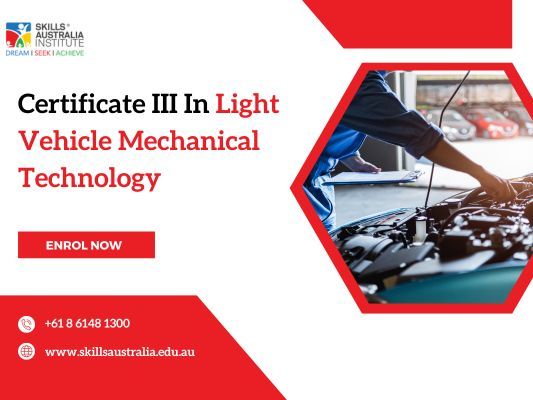
#Certificate III in Light Vehicle Mechanical Technology#auto mechanic certificate#automotive courses
0 notes
Text
robots in disguise :)
Cybertronians are masters of disguise, easily able to integrate themselves into most alien societies. Especially ones that consist of other cyber life or heavly plated alien, things cybertronians can easily mimic. When unable to mimic the native life, bots will often take advantage of halo Forms technology, creating a near-perfect solid light replica of the native life. Cybertronians also have the built-in ability to pick up and decode languages just from hearing them. with Their vocalizer being extremely flexible and able to mimic the sound of other species, and if they desire, some can mimic the voices of specific individuals.
Scouts and infiltrators are usually able to figure out how to mimic the native life's behavior and better integrate themselves. Their disguises are often imperfect, but they're usually good enough not to cause any alarm, allowing these cybertronians to integrate themselves into alien societies undetected so they can insert themselves into roles that would give them the most power and influence. This allows Cybertronians to easily take other alien planets/societies out from the inside either to destabilize them so they become non-threat or to convert Their planet into a cybertronian colonies. But if an infiltration is unsuccessful, Cybertron has enough military might they can usually enforce their will on a planet by force, if need be.
During the war, due to Cybertron's unstable state, many Cybertronian colonies were able to break free from Cybertron's control, and many civilizations whose development was purposefully stifled were able to finally Advance without Cybertrons Influence.
Course, an infiltration campaign is not the reason why our little groups of stranded Autobots and Decepticons are stuck on Earth. So, the stranded bots don't have the same tools that an infiltrators might have. On earth, they can not mimic the native life very well, They are too small and often lack any plating, but they can mimic their vehicles and other mechanical devices, but that can only help so much. Neither side Possesses a haloform generator, leaving them reliant on native beings to perform certain tasks for them and help keep their existence hidden. Barely any Bots on either side had been on an alien planet before, and the ones that have only ever really been on Cybertronian colony worlds. But, one of the stranded Autobots is an ex-infiltrator and is more than familiar with dealing with unkown alien worlds. :)
#cybertronians are kinda scary#transformers fan continuity#transformers#tf#cybertronian lore#this was gonna be a drawn lore post but decided after doing the sketches for it it work better as a text post#might start posting more my text lore on blog instead of keeping it in docs#weird shapeshifting robots car bug things Destroying other civilizations from the inside :)#i wonder witch autobots worked as a ex infiltrators :)#hopefully they never did anything really messed up and evil in their old infiltrators days that puts their morality in question#lore post
141 notes
·
View notes
Text

Tomorrow launched ARMTGE!
ARMTGE is born to be compatible with both 5e and onednd. It focuses on the noir, introspective, and human themes that are at the core of the cyberpunk genre, rather than flashing neon lights and heroic cyborgs.

The future isn't as bright as you wished. Corporations own everything, your life, and your body. People come into the world to buy, consume, and throw away. There is no more good and evil, but only people that do anything to survive.
Fantasy Cyberpunk: in the future, technology replaces everything. What was called magic is explained by science, and those arcane practices are long forgotten. Most of the fantastical creatures that people dream of went extinct, and only few ill critters survive dwelling in the sewers of metropolis. This is your magical world and the protagonists are still humans, elves, orcs, and all the common fantasy races.


ARMTGE also introduces many new mechanics, such as hacking, weapon attachments, and body mods, in addition to the new classes, origins, and character backgrounds. For the first time after Descent Into Avernus, players will also be able to own their personal vehicles, chossing from a wide variety of cars, trucks, bike and even flying vehicles. Each new mechanic is designed to be simple to understand, but also with enough depth to entertain any kind of player, from the casual, to the hardcore min-maxer.
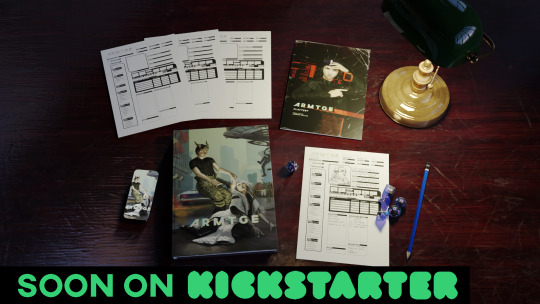
If you love 5e, and you would like to experience your world in a dark future, this is for you!
11 notes
·
View notes
Text
types of cars the gods drive
purely based on vibes
zeus: some type of electric car. he powers it himself and honestly that’s the highlight of owning the car to him
hera: a suv like a Range Rover — expensive, fancy, recognizable, just like her
hades: some car that has paint so pitch black that it absorbs any light it comes into contact with
poseidon: something like a Ford Focus. plain and simple and not top-of-the-line or new since he barely drives. he just wanted something blue
demeter: light green Volkswagen Beetle. or something very green/energy efficient like a toyota prius
hestia: a pretty, vintage car like a 1970’s Mercedes. (she’s still trying to catch up with all the new technology of the 21st century.)
apollo: a sports car. no need to elaborate.
artemis: forest green Jeep Wrangler, specifically the model without doors
athena: also an suv, but a modest one that doesn’t stand out or have any unnecessary extra features
ares: a motorcycle that needs more repairs than it’s worth, but when you have the best mechanic in the world as a brother, it doesn’t matter…right?
aphrodite: pink convertible
hephaestus: Ford F-150, RAM 1500, GMC Sierra 1500….whatever a really good pickup truck is. he’s always toting big projects and needs something capable of carrying the heavy loads of metal
hermes: literally every car you can think of, he’s driven. he can’t be dedicated to just one vehicle. as god of travels / messages, he loves to explore how transportation feels in every possible scenario
dionysus: bro does not drive. but if he did, he’d have something utterly ridiculous and laughable
#listen: I’m not a car person so idk#but I tried#greek mythology#greek gods#Zeus#hera#poseidon#hades#hestia#demeter#ares#aphrodite#Hephaestus#athena#Apollo#artemis#Dionysus#Hermes
97 notes
·
View notes
Text
Near the Ukrainian city of Avdiivka, a boxy robot zips along the rocky, cracked road. Snaking from side to side, the robot—a four-wheeled machine, around knee height—carries cargo and ammunition for Russian troops. However, it’s being watched. Hovering above the road, tracking the movements of the robot, is a Ukrainian drone. Suddenly, another drone smashes into the robot, blowing it to pieces.
The attack, which happened in early December and was claimed by the Ukrainian military’s 110th Mechanized Brigade, is one of a small but growing number of incidents where unsophisticated robots have been used against other robots in Russia’s war in Ukraine. Aerial drones have been used to surveil or attack ground robots, soldiers have attached weapons to land-based robots, and other small unmanned bots are being fitted with jamming technology to knock drones from the sky.
Since Russia’s full-scale invasion in February 2022, small aerial drones have played an outsize role in the war in Ukraine—with thousands of drones being used to monitor the battlefield, watch enemy movements, and carry explosives. Videos produced by Ukrainian and Russian soldiers show the drones, which are often first-person view (FVP) drones, being used to attack tanks and troops. As the war has raged on, another kind of robot has increasingly appeared in recent months: the unmanned ground vehicle, or UGV.
“There’s lots of unmanned ground vehicle development happening,” says Samuel Bendett, a Russia analyst at the think tank Center for Naval Analyses who tracks military drone and robotics technology use. Most of the UGVs being developed or used are small robots, Bendett says, as larger vehicles will be tracked, observed, and attacked with FPV and other aerial drones. “The Ukrainian battlefield is saturated with aerial sensors that basically track and attack anything that moves,” he says. That includes other robots.
The UGVs being developed within the war are typically four- or six-wheeled machines that can be kitted out for multiple purposes. There are logistics robots, which can carry supplies to the front lines; evacuation robots that carry injured people; and robots linked to combat such as those that can place or destroy landmines and have explosives or weapons attached. These robots are largely remote-controlled by humans—there’s little autonomy—and operate over ranges of a few kilometers.
UGVs themselves are not new. Some of the earliest UGVs were created in World War II and used as explosive devices, while they have also appeared in other conflicts. Most Russian UGV developments so far have been homemade or DIY, Bendett says, with troops or volunteers creating robots for specific tasks or needs. Ukraine has, to date, put more military effort into developing ground robots, with the government stating its ambition to build an “army of robots.”
Videos from within Ukraine, first shared on Telegram channels and reviewed by analysts such as Bendett, show a Russian drone monitoring a Ukrainian UGV as it trundles along laying mines. In another video, a small six-wheeled robot approaches a downed drone, lifting up its wings, before troops approach it. A third shows drones trying to destroy UGVs moving along the ground. In one demonstration, a person is dragged behind a UGV along the ground. Earlier in January, Mykhailo Fedorov, Ukraine’s deputy prime minister, announced a UGV with an “automated turret” that, he said, can also transport ammunition and provisions to fighters.
Before Russia invaded, Taras Ostapchuk’s company created posts and poles for street lights—now he’s building robots and FPV drones for Ukraine’s war effort. Supported by Ukraine’s military technology cluster Brave1, Ostapchuk has developed three kinds of robots, all called Ratel. One is a four-wheeled “kamikaze” robot that can have explosives strapped to it or lay landmines; the other two robots can carry equipment or carry injured people. More than 45 have already been deployed to the military, Ostapchuk says.
The small robot, Ostapchuk says, has a range of 2 to 3 kilometers, which can be extended with a ground station that amplifies the radio signals used to control it, while one of the larger robots can be controlled by a human 40 to 60 kilometers behind it. Within some areas in Ukraine, such as Zaporizhzhia and the Donbas region, Ostapchuk says it is crucial for UGVs to have technology to defeat FPV drones that may be targeting objects on the ground. “It’s a big problem, so we install this equipment,” Ostapchuk says. In a testing video, one of the Ratel UGVs is approached by a drone which appears to crash into the ground and stop working.
“Certainly, as you get more unmanned ground vehicles being used in combat at larger scales on both sides, you have that potential for drone-on-drone combat, which is fascinating,” says Zachary Kallenborn, a non-resident adjunct fellow with the Center for Strategic and International Studies and a national security consultant. However, Kallenborn cautions that these instances are not likely to be “decisive or that critical” in the broader scope and scale of the war. Instead, he says that the introduction of more UGVs may lead to changing strategies of those involved in the war. “I think we’re going to see an increasing shift toward targeting operators and support structures, rather than targeting the drones themselves,” Kallenborn says.
Still, as more UGVs are developed, they are likely to take on greater roles in the conflict. Ukraine has already had success with naval drones, Kallenborn says, adding that UGVs allow soldiers to undertake other tasks and reduce some of the risk for humans on the ground, such as a robot sent on scouting missions. “No one really cares if the ground vehicle gets destroyed, except the accountants,” he says.
So far, Bendett says, UGVs haven’t been seen in huge numbers—it is unclear how much Russia’s industrial base will develop the robots, he says—but in the coming year, he expects there to be more experiments with autonomy, startups creating more robots, and more UGVs with anti-drone technology incorporated. “The whole point of fielding a lot of UGVs, for example, is to supplement some of the dangerous missions by the soldiers and to impact the adversary as much as possible,” Bendett says.
2 notes
·
View notes
Photo

AUR30620 – Certificate III in Light Vehicle Mechanical Technology qualification at APEIRO Institute reflects the role of individuals who perform a broad range of tasks on a variety of light vehicles in the automotive retail, service and repair industry.
#light vehicle mechanical technology courses#automative courses#mechanical technology courses#automotive certification programs
0 notes
Photo


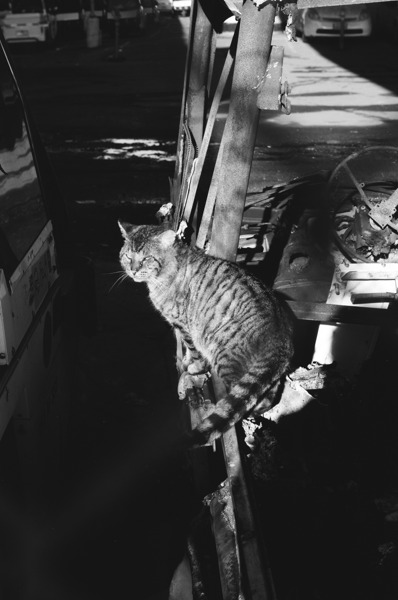
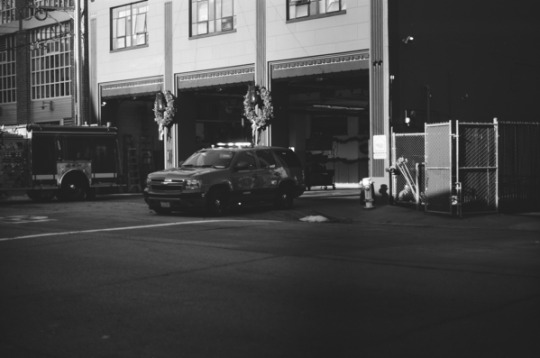

Being an “elder millennial” or “Xelennial” or whatever label you want to call someone born in the 80s that got to play the original Oregon Trail, I got to see a lot of technological transitions. Growing up, we had film cameras. Point and shoots, mainly, with some oddballs here and there (remember those cameras that were flat and long?). At some point while I was a teenager I was gifted a used Fuji STX-2 and I became the family photographer. From that point forward I took more photos than was in them. That camera, sadly, is no longer with me. I’ve since moved on to a Canon K2 and then later a Canon Elan7 which I continue to use today (which is actually my second Elan7 after my first one met with a terrible fate).
I went to film school (the motion kind), but never really got a chance to be a “filmmaker”, for whatever that means, so I use photography as a way to exercise that muscle a bit. Aside from sharing some shots on Flickr and a few things on Instagram, I’ve never really shared my photography with anyone other than my partner, so I’ve not really worked on talking about my process or really looked at my photography objectively. Over the next year my hope is I can start being more thoughtful about the photos I take and forcing myself to write about them here might help with that.
This past month I picked up a Fujica ST801. I mainly bought it for the lenses (I’ve been collecting old, mostly soviet M42 mount lenses), but the camera is actually a fantastic little device. The shutter and the film winding lever are wonderfully mechanical. Given it’s a Fuji camera, I thought it appropriate to start off with a roll of Fujifilm Neopan Arcos 100II as my test roll. Part of the “joy” of eBaying cameras and camera equipment is not fully knowing if what you’re going to get is actually as functional as the post made it seem. In this camera’s case, the light meter is subtly messed up, but I don’t know yet if it’s because something’s actually wrong or if it’s because it’s actually meant for silver oxide batteries and I’m using alkaline. As a result, I ended up having to use a light meter app on my phone. I should probably get that fixed.
Here’s a selected few photos from that roll.
Image 1, the Caltrain station
I've never really shot this stock before despite shooting a lot of black and white film. This stock has a lot of dynamic range and not a lot of grain, which I actually really like. I actually really like this composition, though I keep waffling back and forth on whether I should have tried for a deeper depth of field or if I actually like that the foreground is out of focus.
Image 2, more caltrain station
This is a lot closer to the "style" I normally shoot, quote unquote "street photography". I like the person in the shot, and I like the deep hallway. I don't like that I don't have any of the next train signs in focus. Again, this was a pretty challenging lighting situation, and with a broken meter, I just went with a wider open f-stop.
Image 3, cat on a bombed out metermaid vehicle
As I was walking down the street I saw a flock of metermaid vehicles parked behind a fence, which was interesting enough, but as I got closer, I spotted a cat who seemed to be offended that I made eye contact. The vehicle it was sitting on seemed to be having a rough go at it, what with being burned and all, but it made for a fascinating subject. This is another one where I was impressed by the dynamic range of the film. The cat is well lit, but you don't lose all of the detail in the vehicle either. I actually have three pictures of this cat, but this one stands out the most because of the contrast in the shadow area vs the cat. A+, would potentially offend this cat again.
Image 4, fire rescue racing out of firestation
I don't know if "lucky" is the right word, considering emergency vehicles racing off is typically not a good thing, but I happened to grab this shot while walking by a fire station just as they received a radio call. This is probably the one time I regret having black and white instead of color loaded, but I really like the shadows here and the contrast between the shadow and light sides of the building. The vehicle itself seems to just pop as well. I also like that there's some minor halation on the lightbar, which is not something I was particularly expecting to catch on black and white.
Image 5, aka "this roll is 36, but I'm on shot 38"
Part of the joy of mechanical cameras that don't have any sort of DX code reader or automatic winding is you can sometimes squeeze out more frames than you expect from a roll if you are careful while loading. At the end of my walk I hit a taco truck for lunch, and took this photo, not fully expecting it to work. This was the end of the roll. Like a lot of the other shots from this roll, I'm actually really surprised at the detail you get in the darker areas. The tacos were also delicious.
Conclusion
I'm definitely going to shoot with this camera more this year. The fact that it's slighlty broken means I need to stop and consider my shots a lot more than when I'm out with the Elan with all of it's fancy autofocus and working light meter (and exposure compensation, and...). I actually really like this film stock as well. My usual goto for black and white has been Ilford HP5, but it's super grainy. While that's sometimes the feel I want (photos you can chew), it's nice to have an alternative.
4 notes
·
View notes
Text
Enhancing Fleet Safety with Driver Behavior Monitoring
Introduction:
In the intricate world of fleet management, ensuring the safety of your fleet and drivers is not just a good idea; it’s an absolute necessity. As road conditions become increasingly intricate and uncertain, fleet managers must step up to actively promote safe driving practices. One solution that’s gaining widespread recognition is driver behavior monitoring, paired with proactive coaching to ensure both safety and compliance. In this article, we will delve into the critical significance of fleet safety, delve deeper into the mechanics of driver behavior monitoring, and thoroughly explore the myriad benefits it brings to the forefront.
The Importance of Fleet Safety:
Fleet safety is not merely about adhering to regulations and avoiding accidents — it’s about protecting your drivers, who are the bedrock of your operations. When drivers practice safe driving, it’s not just a win for safety; it’s also a win for your finances. Safe driving practices lead to fewer accidents, lower fuel consumption, decreased vehicle maintenance costs, and reduced insurance premiums. Prioritizing fleet safety isn’t just about meeting legal requirements; it’s a strategic decision that directly contributes to your business’s overall success.
Understanding Driver Behavior Monitoring:
Driver behavior monitoring involves using advanced technology to gather real-time data on driver actions while they’re navigating the roads. Let’s zoom in on LMDMax, a user-friendly performance app that sheds light on various driver behaviors, including speeding, aggressive braking, rapid acceleration, and seatbelt usage. By consistently monitoring these behaviors, fleet managers can swiftly identify risky habits and take corrective actions to cultivate a safer driving environment.
Promoting Safer Driving with LMDMax:
LMDMax’s performance app features a robust driver behavior monitoring component aimed at elevating fleet safety. Here’s a closer look at its functionalities:
Real-Time DA Monitoring: The LMDMax solution offers real-time tracking of driver behavior, enabling fleet managers to receive instantaneous alerts about risky actions on the road.
Driver Performance Reports: Access in-depth reports detailing individual driver behavior, enabling the identification of patterns and trends that warrant attention. These insightful reports facilitate recognizing top-performing drivers and implementing targeted training for those in need of improvement.
Driver Coaching and Incentives: Utilize the wealth of driver behavior data to design coaching programs that promote safe driving practices. Acknowledge and reward drivers consistently showcasing safe behavior, thereby fostering a safety-focused culture within your fleet.
Benefits of Driver Behavior Monitoring:
Embracing driver behavior monitoring brings about a plethora of advantages:
Accident Prevention: Swift identification and rectification of risky behaviors substantially decrease the chances of accidents, resulting in an overall enhancement of fleet safety.
Cost Savings: The adoption of secure driving practices translates to reduced fuel consumption and minimized vehicle maintenance costs, resulting in substantial savings for your fleet.
Compliance and Liability Management: Proactively implementing safety measures underscores your commitment to adhering to regulations and mitigating potential liability risks.
Driver Retention and Morale: Prioritizing fleet safety communicates to drivers that their well-being holds a prime position, leading to elevated driver satisfaction and retention rates.
Conclusion:
Driver behavior monitoring is a powerful tool to enhance fleet safety and create a culture of responsible driving. With LMDMax, you can proactively monitor driver behaviors, address safety concerns, and create a safer environment for your fleet and drivers. By making fleet safety a priority, you not only protect your assets but also boost operational efficiency and build a positive industry reputation. Elevate your fleet’s performance by gaining a deep understanding of driver behaviors and holding them accountable.
Book a Free Demo
#dsp#logistics#transportation#amazon#trucking#last mile delivery#lastmiledelivery#performance management
3 notes
·
View notes
Text
Certificate iii in light vehicle mechanical technology - New England College Gold Coast
Why choose our Certificate iii in light vehicle mechanical technology program?
🚗 Hands-On Learning: Get hands-on experience in diagnosing, servicing, and repairing light vehicles, ensuring you're job-ready.
🛠️ State-of-the-Art Facilities: Learn in modern workshops equipped with the latest tools and technology used in the automotive industry.
👨🔧 Industry-Experienced Instructors: Benefit from the guidance of instructors with real-world experience in the automotive field.
🌐 Practical Training: Our program includes practical training, providing you with the skills needed to excel in the automotive industry.
🔧 Pathway to Success: Acquire the knowledge and skills required to pursue a successful career in light vehicle mechanical technology.
Embark on a rewarding journey in the automotive industry with New England College Gold Coast. Enroll in our Certificate III in Light Vehicle Mechanical Technology program today! 🛠️🚗 #AutomotiveEducation #CertificateIII #NewEnglandCollegeGoldCoast"
0 notes
Text
did some thinking about my homeworld. the city I grew up was called Kel’radova, though I'm not sure we wanna stick with that cuz we didn't come up with it and I don't know what if anything it's supposed to mean. most people just call it The City.
it's a huge city state bounded by the sea on one side and desert on the other, with a river running through it, inhabited by many different people, but the native population mostly draws from arabian cultures, while the ruling class is disproportionately white people drawing more inspiration from italy, france and especially spain, and their influence means even a lot of the nonwhite and lower-class people have latinate-sounding names. it used to be an imperial subject of a now-dying empire at one point in the past but has been independent for centuries and while it hasn't officially claimed any greater territory has a lot of power in the region and the world at large.
it's pretty much the most advanced place in the entire world, especially in the realm of magic. a lot of the technology uses magic in some regard, and there are magical protection measures all around it that make any attempt to attack the city futile. most of the ruling class are powerful magic users of some sort, usually either hailing from bloodlines with powerful innate magic or family cults that serve a deity who has bestowed them with magic. my adoptive father belonged to one of the latter, while one of my mentors was one of the former.
the non-magical part of the tech is all mechanical, a lot of intricate clockwork and systems drawing power from the water or the sun. electricity is known about somewhat but mostly seen as a curiosity that only lightning mages dabble in to show off. there's no real combustion motors either, land vehicles are usually animal-drawn, but there's fairly advanced ships and even some airships. if you want to travel long distances quickly you use teleportation magic. lighting is mostly fire-based, but refined to be very efficient, or achieved by redirecting sunlight.
the city is built more or less circular, with a very dense center, levels upon levels and towers reaching into the sky, and several layers of defensive walls. sometimes waterways flow underneath buildings. towards the sea things stay pretty dense, with a lot of ships coming in and out, but towards the other directions things slowly get less dense and you see fields out in the fertile areas.
the architectural style is mainly a mix of different mediterranean civilisations during the renaissance, combining ancient, medieval and early modern aspects. but there's also an area of the city with more eastern asian influences from more recent immigrants from farther away.
different cultural and religious groups being forced to coexist have made the city fairly socially liberal, most people are tolerant of others and things like homosexuality and gender-non-conformity are generally allowed to exist, even if they definitely aren't treated equal.
slavery is officially abolished but while it isn't recognised or enforced by the government, the amount done to stop it from happening regardless varies. what slavery does still exist mostly affects immigrants - humans and non-humans, both those who came willingly and people brought there against their will - rather than the native population. what native or white slaves do exist are usually women enslaved by their own families.
the government is made up of the city's most powerful families. amongst themselves they are organised more or less democratically but towards the common people they have basically absolute power, only held in check by each other and the desire to keep the city prosperous. the most powerful archmages serve as heads of state, with each of their families usually having close ties to a couple of the slightly less powerful families below them, from which they select their most trusted subordinates. servants are usually marked by their employer, and if caught out tend to be held for ransom rather than killed.
despite being very powerful mages, even the rulers of the city are decidedly not immortal and the balance of power is prone to shift any time one of them dies, and political assassinations are not unheard of.
3 notes
·
View notes
Text
Get the best Certificate III in Light Vehicle Mechanical Technology course in Adelaide to help you succeed in your career.
The Certificate III in Light Vehicle Mechanical Technology Is the best course to study in Adelaide. As a member of the automotive retail, service and repair industry, this course reflects the role of individuals performing a wide range of repair, servicing, and maintenance tasks on a variety of light vehicles. You can learn more about this course by visiting one of the best colleges in Adelaide.
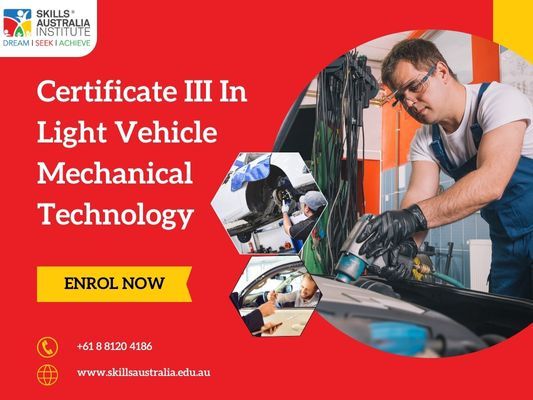
#Cert III mechanical Technology Adelaide#Certificate III in Light Vehicle Mechanical Technology#auto mechanic certificate
0 notes